FW
As the Pakistan government has promised help boost production and exports at reduced prices, the country’s textile industry has suspended its several month long agitation for solid business demands.
Three out of the eight demands of the industry have been accepted by the government. However, the industry while welcoming this gesture announced that it will continue to agitate for the acceptance of the rest of the demands. The three accepted demands are: raising the regulatory customs duty on import of Indian cotton yarn and fabric-coarse cloth from the present five per cent to 25 percent. The government though, raised it only to 10 percent, effective from November 1. The second demand is provision of more and cheaper, long-term finance for the ginning and spinning sector, and the third demand is reduction in long-term financing and export financing (ERF) by one percent.
All Pakistan Textile Manufacturers Association (APTMA), the industry leader, stated that the textile industry is hopeful that the rest of the eight demands will soon be considered favourably and resolved by the government for the viability of the industry and increasing exports of the country.
Pro-business policies by the Prime Minister Nawaz Sharif and a team of his three negotiators conceded some of the demands. Ishaq Dar, Finance Minister said that they need more revenues and would have to enlarge their forex earnings rapidly to expand nationwide development work and repay foreign loans. However, the government has chosen to help the textile industry as it is the biggest labour employer and foreign exchange earner through exports, he added.
A mega textile cluster is coming up at Mysore. The project will receive Rs 50 crores by way of a central grant and an additional 25 acres of land is being identified for expansion of the cluster. Work on the textile cluster is expected to begin soon after the ground breaking ceremony to be held later this month. Once launched, it would be among the first of the five industry-specific clusters sanctioned for Mysore.
Being a labor-intensive industry, the textile cluster is expected to help generate additional employment in the region, besides fuelling the local economy by spawning ancillary industries to support the cluster. The area is known for cotton, the bulk of which is supplied to textile units in Tamil Nadu. Once the textile cluster takes shape, local farmers will have a market closer home which will be beneficial to them as it will obviate the need for transportation.
The mega textile cluster is expected to give a boost to the Make in India campaign. About Rs 30 crores has been earmarked as initial investment. A Special Purpose Vehicle will be registered under the Companies Act for its implementation and funding.
Mysore and its surrounding regions are known for sericulture and the famed Mysore silk has been accorded the geographic indication tag in view of its uniqueness.
A two-minute silence was observed at the NSC booth in memory of the victims of Paris terror attacjs. The biggest development at ITMA 2015 was the coming of age of digital printing. This sector has its own chapter at the exhibition for the first time. The show’s theme, ‘Master the Art of Sustainability’ is in alignment with digital printing. It offers huge benefits in terms of vast reductions in the use of raw materials, water and energy.
In digital textile printing worldwide, until today, applications for industrial soft signage have been responsible for much of the growth. However, it is still comparatively small, despite growth rates of around 25 per cent annually, representing around just 1.5 per cent of the overall textile printing market.
Akiyoshi Ohno, Senior Advisor and ex-President of NSC, outlined the rapid development of his company’s digital systems and explained why the latest single pass machines now make sound business sense. Ohno was speaking at the Konica Minolta Inkjet’s press conference.
Italy’s value and influence are considerably higher even though it now represents only about three percent of the world’s printed textiles by volume. Giovanni Sommariva, a noted industry consultant said digital printing is among the key technologies that have been responsible for a revolution in making the most up-to-the-minute Italian fashions available to the world. The full textile production chain has been totally modified to provide flexibility and just in time supply, including RFID and bar-code tracking, inspection and packaging systems for complete traceability. Inkjet printing provides just in time production, low energy consumption, waste reduction and easy operation.
Pakistan will import more cotton this season after losing about four million bales of the fiber to rains, pest attacks, and bad farm inputs. The country will take a loss of Rs 120 billion worth of cotton in the current season after the government revised down the production target by another two million bales.
Losses would multiple if byproducts (banola oil seeds and cotton cake) and value added textile products are included. This season, the industry expects the country to import at least 2.5 million bales after the government revised the production target twice. In the first five months cotton production fell almost 23 per cent. Local consumption is estimated to be around 15 million bales this season. Last year the country had imported around one million bales to meet the demand of the local textile industry.
Heavy rains in April and May 2015 damaged cotton crops in key production areas of Punjab province. Aggressive use of pesticides to counter pest attacks on the crops still in the fields also damaged fiber. The average production from an acre of land has declined drastically in the current season.
Floods also damaged crops over an estimated area of 1,00,000 acres. The worst affected areas from rains were Multan, Lodhran, Vehari, Khanewal, Pakpattan, Sahiwal, Layyah, and Rahim.
US imports of denim apparel including jeans fell by just 0.3 per cent from January to September 2015 compared to the same period last year. This indicates the total demand for denim jeans and apparel is almost the same with a marginal fall. However, the total demand for denim apparel in the US still lags behind that of 2013 figures by a good margin. Against total imports of denim apparel of about 522 million pieces in 2013, the country is struggling to even reach a figure of 500 million pieces in imports.
In 2014, imports were stuck at 479 million pieces and are likely to be of a similar quantity this year, probably with a slight fall as seen in the figures of 2015 till September. The US market is more or less a saturated market and fashion, styles, market shares of brands, prices etc are the main parameters witnessing changes. Quantities and average consumption have reached a ceiling which was defined in 2005.
However, women’s jeans seem not to be losing their sheen as imports and hence sales are witnessing a growth for this segment. Imports of women’s jeans increased by about 2.2 per cent in the year 2015 and at the same time men’s jeans imports fell by about two per cent creating a net balance on import figures.
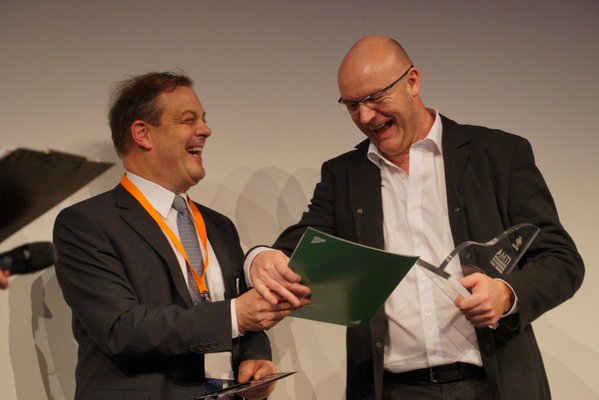
ITMA 2015 has achieved a new milestone, attracting the biggest number of exhibitors since the show's launch way back in 1951. The 17th edition of ITMA has 1,691 exhibitors from 46 countries showcasing their innovations at the event. The previous record was set by ITMA 2007 when 1,451 exhibitors from 38 countries took part in the exhibition.
ITMA, the world’s foremost trade fair dedicated to textile machinery is also once again marked by a significant presence of Italian companies, both in their numbers and in the quality of their technology.
Italian exhibitors occupy 30 per cent space
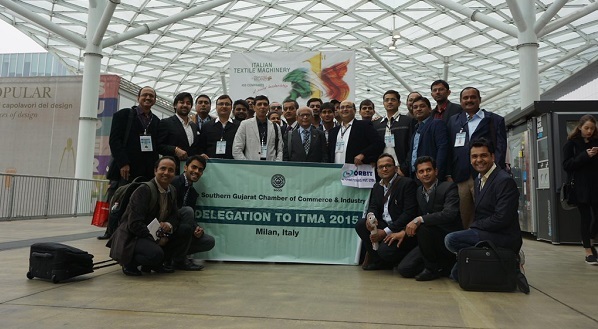
For eight days,visitors at ITMA , the world’s foremost textile machinery event will have an opportunity to appreciate the high level of technology being displayed by the 454 Italian machinery manufacturers exhibiting at the fair. The overall exhibition space occupied by Italian machinery manufacturers is nearly 32,000 sq. mt. (30 per cent of the total available surface area), confirming Italy’s leadership position among exhibiting countries.
“We’re just proud to have brought back to Milan the world’s major textile machinery fair after twenty years,” said Raffaella Carabelli, President of ACIMIT (the Association of Italian Textile Machinery Manufacturers), adding, “These numbers not only rank Italy first among exhibiting countries, but are a true testament to the vitality of our sector, and confirm the good state of health of the Italian textile industry.”
ITMA 2015 also features a larger exhibition, with net exhibit space of over 108,000m2, occupying 11 halls of the Fiera Milano Rho fairgrounds. It is about 20 per cent larger than the 2011 exhibition. As in previous years, exhibitors from CEMATEX countries occupy the largest space. They booked 69 per cent of the total net exhibit space - an 18 per cent increase over the 2011 figure.
Followed by Italy, exhibitors from Germany, Switzerland, and Spain are present in large numbers. From non-CEMATEX countries, the four largest groups of participants are from Turkey, China, India, and Japan. The countries fielding the largest contingent of exhibitors at ITMA 2015 are Italy (453 exhibitors), Germany (238 exhibitors), China (184 exhibitors) and India (158 exhibitors).
Sustainability in focus
The Milan edition of ITMA is a litmus test for assessing the commitment of the global textile machinery sector to a truly sustainable textile and garments industry, as the event’s slogan states: ‘Master the Art of Sustainable Innovation’. For some time now, Italian machinery manufacturers have been focusing on the issue of sustainability for their products, in order to satisfy the demand for efficient technology solutions that effectively cut back on consumption, and consequently on production costs.
The World Textile Summit gave more than 150 textile industry leaders a range of expert insights into the business issues that feed into decisions on sustainability in the textile supply chain. Co-located with ITMA 2015, the Summit had a program designed to examine how investment in ‘clean’ manufacturing or the use of sustainably sourced materials can help add value to companies at all levels of the supply chain. The subject of sustainability aligned with the overarching theme of ITMA 2015, which continues at the Fiera Milano Rho, in Milan, Italy, until November 19, 2015.
Among the efforts is the launch of the ITMA Sustainable Innovation Award, the rebranding of the ‘Research and Education’ pavilion to ‘Research and Innovation’ pavilion, and many knowledge-sharing platforms to drive home the sustainability message. CEMATEX continues to support research and educational institutes with a grant for the participation in the ‘Research and Innovation’ pavilion. The pavilion has 40 participating institutions. Taking centre-stage at the pavilion is the ‘Speakers Platform’ which will be held till November 17, 2015. A total of 43 papers on the theme of sustainable innovations, achievements in innovation and technical textiles applications, will be presented at the platform.
The ‘ITMA Sustainable Innovation Award’ is a new initiative by CEMATEX to honour those who have made pioneering efforts to promote industry sustainability. Three of the finalists were vying for the ‘ITMA Industry Excellence Award’ while another three for the ‘ITMA Research and Innovation (R&I) Excellence Award’, which were announced at the ITMA gala dinner. Tonello and Levi Strauss were declared winners of the first ITMA Sustainable Innovation Award for NoStone denim finishing technology.
Innovative machineries under 19 chapters
The event is featuring exhibits clustered into 19 chapters such as spinning, web formation, winding and texturing, weaving, knitting and hosiery, embroidery and braiding, finishing, dyestuffs and chemicals, software, logistics, plant operations, recycling and education to garment making and textile processing, printing, and fibre and yarn.
The top five sectors include dyeing and finishing occupying 23 per cent of the space, with 303 exhibitors, spinning, 14 per cent of the space with 290 exhibitors, weaving, 12 per cent of the space and 179 exhibitors, knitting and hosiery with 13 per cent of the space and 128 exhibitors and printing segment occupying 10 per cent of the space with 113 exhibitors.
www.acimit.it www.itma.com
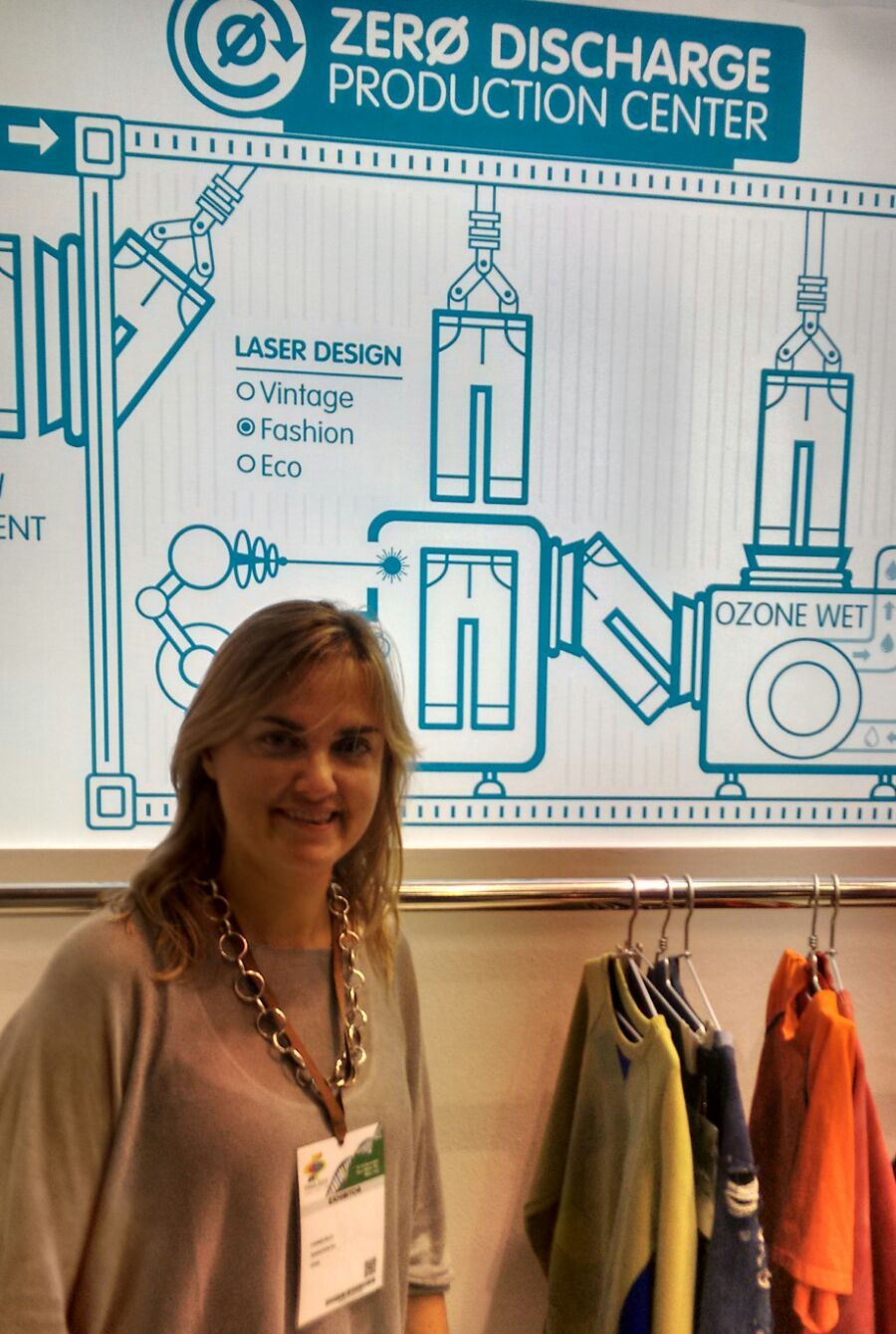
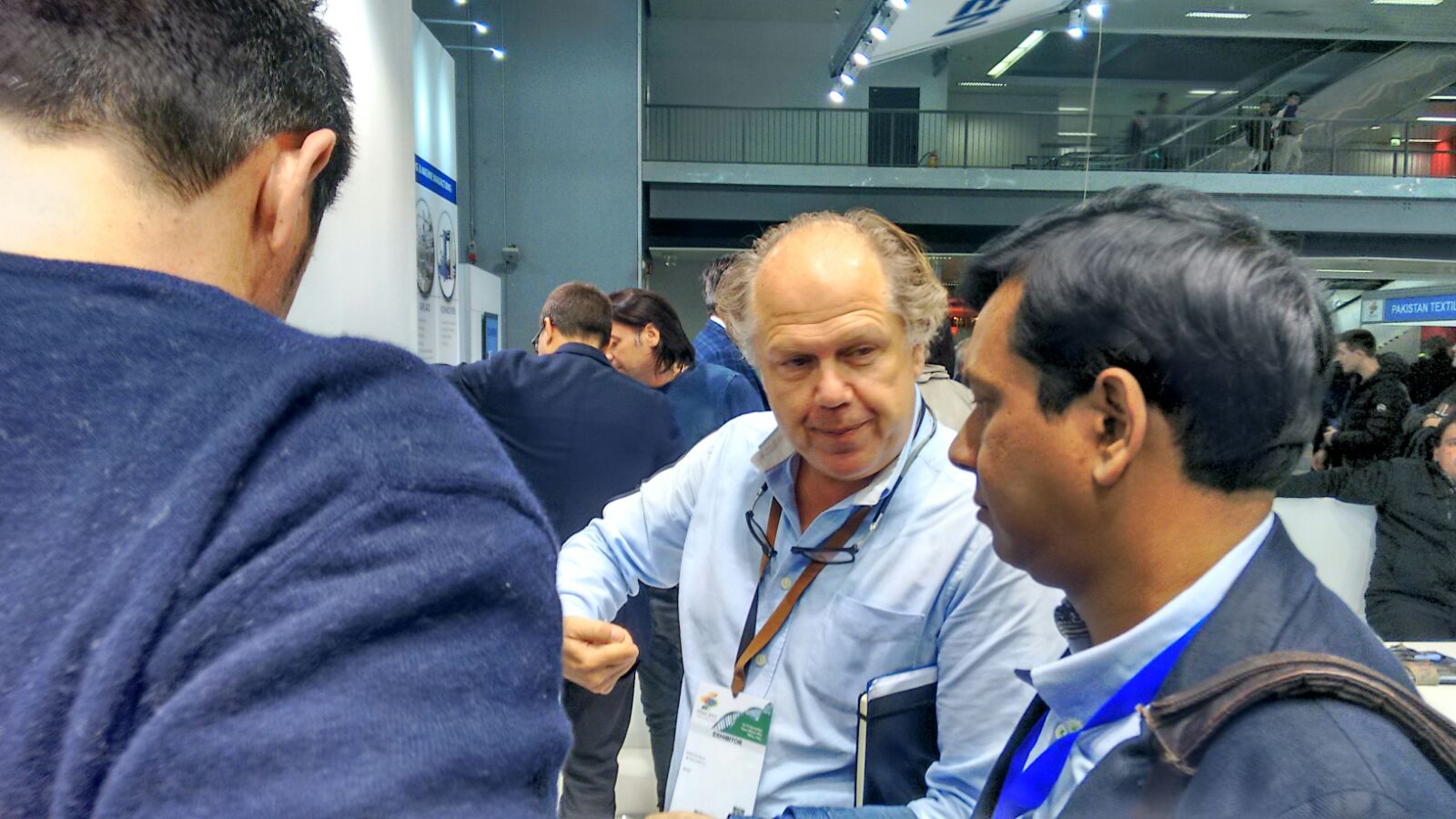
The zero discharge production centre claims to revolutionise the textile industry because, for the first time ever, a denim treatment plant will achieve zero waste. Jeanologia has been able to achieve this with combination of three technologies i.e. the light of the laser, wet and dry Ozone G2, and the nano bubbles of the reactor eFlow, combination reduces water consumption by 90%, the use of chemicals by 90%, and energy consumption by 50%.
“Introduction of ZERØ represents a revolution in the textile industry, we have managed to transform the way that jeans are produced, by way of technologies that reduce the use of water, chemicals, and energy, and we are now taking this transformation a step further with our ZERØ technology, which recycles the water used and eliminates any waste." , says Enrique Silla, CEO Jeanologia. He further adds “The Denim industry currently uses around 350 million m3 of water; and going further with Jeanologia's intelligent treatment plant, we will achieve a water saving of 315 million m3. We believe that by 2020 80% of global production will be generated by zero discharge centers.
“Jeanologia is helping to improve transparency in the textile industry, which at times has been accused of archaic and pollutant production processes. We are living in a new industrial era, in which automation, sustainability, and the intelligent recycling of water will help to make the textile industry a model of transparency, innovation, and sustainable practices.
“Technologically, we have a new optical concept with that we can have new Light PP spray system implemented on all our machines, which helps in reducing dyeing, reducing damage to environment, saving water and improvement in garment”, says Carmen Silla, Marketing Manager, Jeanologia, “ We are happy to respond to the need of the hour that goes to take care of people as well as environment”, she summarises.
The Spanishcompany, Jeanologia, istheworld'sleadingplayer in sustainableandefficienttechnologiesforthe textile finishingindustry.
Since 1993, Jeanologiahaspioneeredandrevolutionizedthe textile industry, offeringendlesspossibilities in garmentfinishinganddesign, while at the same time savingwater, energy, andchemicals, andeliminatingharmfulwasteandemissions. The companycovers 5 continents, 45 countries, includingthe USA, Mexico, Colombia, Brazil, Germany, Italy, Tunisia, Portugal, India, China, Russia, Japan, Morocco, Bangladesh, Turkey, and Vietnam. Leadingbrands, such asLevi’s, Polo Jeans, Abercrombie & Fitch, Edwin Japan, Pepe Jeans, Diesel, Hilfiger Denim, Salsa jeans, Jack & Jones, and Replay, aswellasthebigretailers, including GAP, Uniqlo, and H&M, areusingthetechnologyithasdeveloped.
www.jeanologia.com

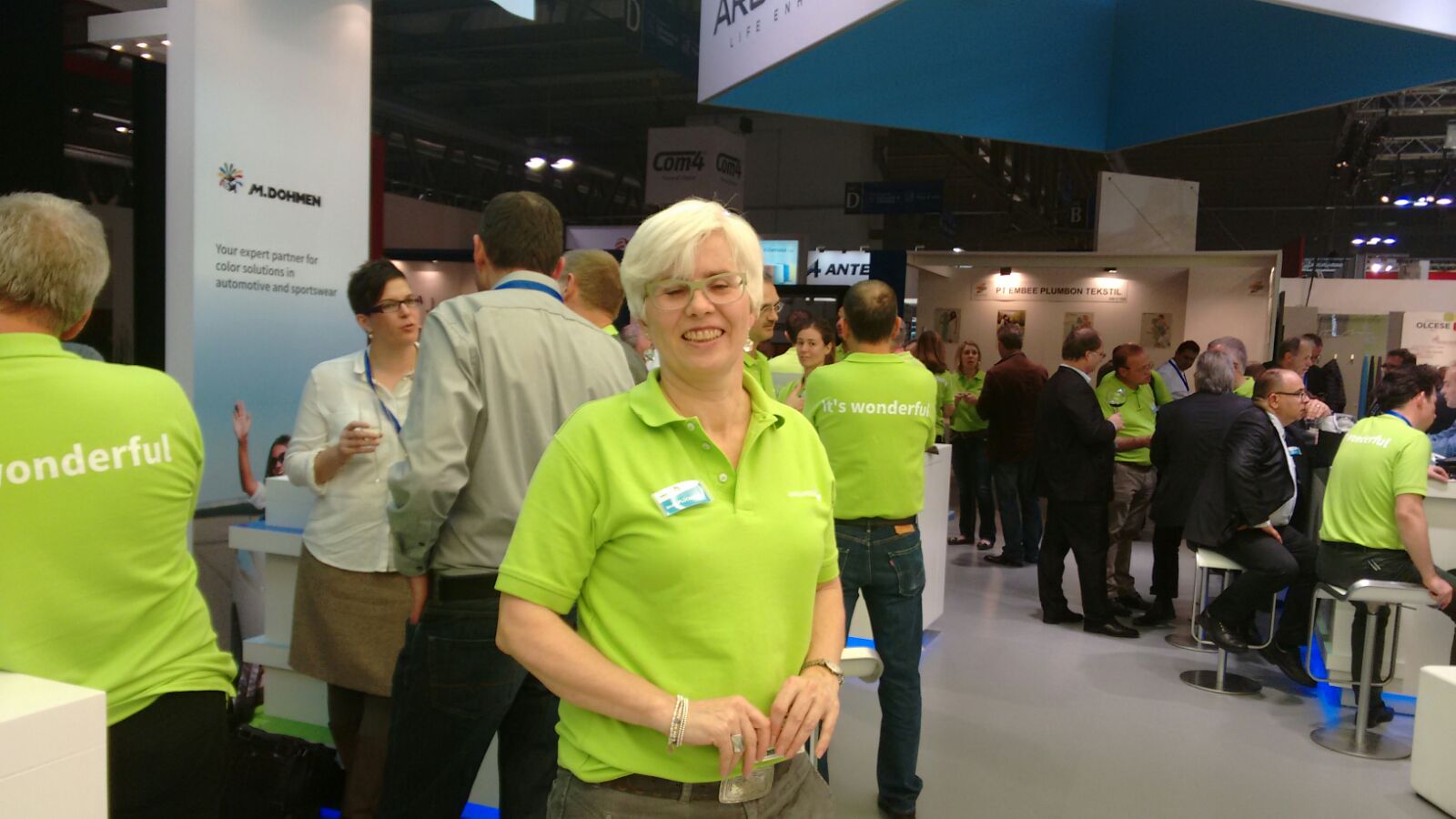
Archroma that has 60 per cent of its business coming from textiles is committed for better solutions to offer to industry and brands. Talking about sustainability, BeatePluckhan, Head of Sales Europe/Africa “ Honestly speaking, I don’t think the awareness or quest for sustainability is any region specific, we have equal business spread all across the world in Asia, Americas and EMEA region( European, Middle East and Africa) and we feel that in all the regions sustainability and performance solutions are the need of the hour and future of textiles is more into functional and technical innovations”.
For colour enhancement, It is highlightinghere on two new ground-breaking solutionsat ITMA 2015,EarthColors and Inkpresso. EarthColors is a new range of dyes created from agricultural waste like almond shells, saw palmetto, rosemary leaves, etc. They can be used to provide rich red, brown and green colors to denim and casualwear, whereas Inkpresso, together with a Swiss technology provider,Archromahas introduced for the very first time a pioneering system that will mark a turnaround in the textile digital printing market. Inkpresso claims to change the way inks are supplied to digital printers.
For performance enhancement, Archroma is offering a constant flow of eco-advanced and innovative new process and functional chemicals, aiming at providing solutions that combine performance, safety and low impact on resources,Archroma regularly partners with innovation-driven players such as Schoeller, Sanitized and Cotton Incorporated, to offer textile producers, brands and retailers the latest and best available technologies.
Sustainability enhancement another significant area where brand owners and retailers around the world are taking action to evaluate the environmental impact of textile treatment, dyeing and finishing processes in response to consumer concerns. It is no longer sufficient merely to comply with relevant regulations, Archroma engages itself in favor of a more sustainable textile industry.
SmartRepel Hydro and Zero add on are the other two solutions towards achieving the same goals.
Archroma, brings these solutions on the back of its decades of experience in formulation and technical know-how in dyestuff and pigments. With the recent acquisition of BASF chemicals textile business and 49% of M. Dohmen, Archroma is gaining further strength in particular in the area of printing and automotive.
www.archroma.com
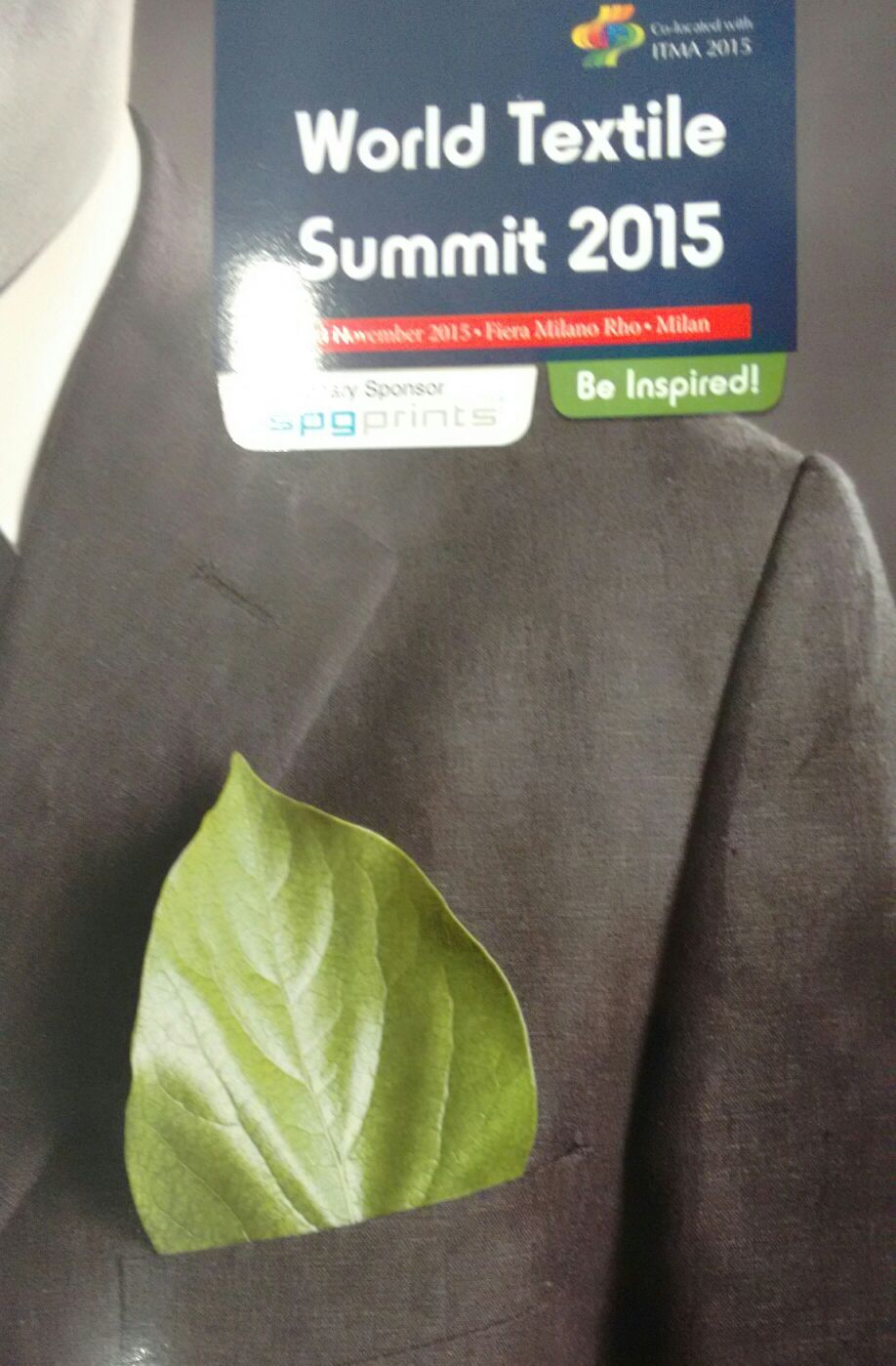
World Textile Summit, co-located with ITMA 2015, saw participation of more than 150 textile industry leaders, sharing a range of expert insights into the business issues concerning decisions on sustainability in the textile supply chain.The summit had a programme designed to examine how investment in ‘clean’ manufacturing or the use of sustainably sourced materials can help add value to companies at all levels of the supply chain.
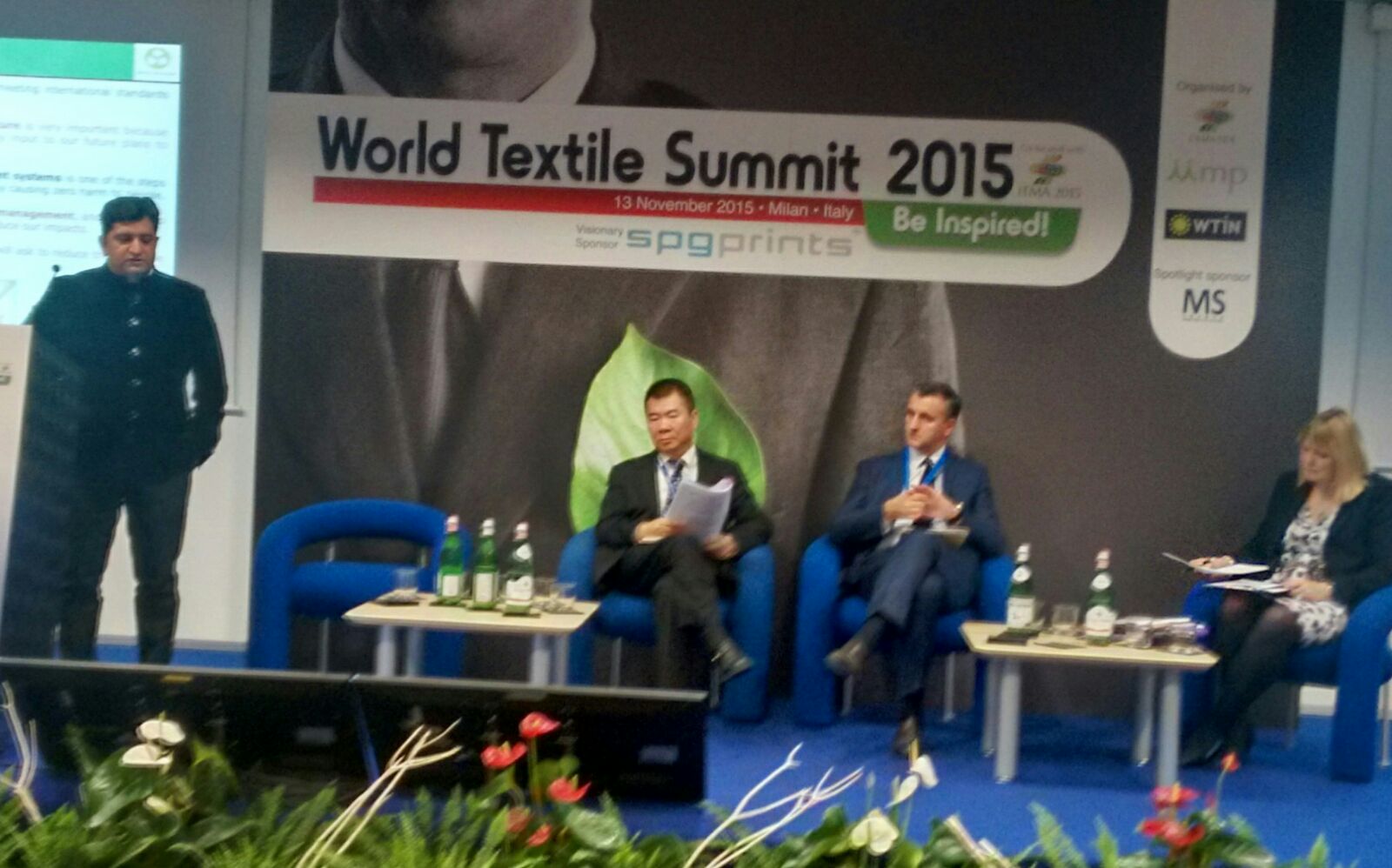
The summit opened with a Peschka, Director, keynote address by Mary PorterAdvisory Services, at the International Finance Corporation (IF), a division of the World Bank. Porter Peschka explained how the IFC, which operates as the Bank’s commercial arm, assists Small and Medium-sized Enterprises (SME’s) in developing economies, often providing investment finance where other sources are either unavailable or too expensive. It also provides consultancy to industry and governments on measure to improve sustainability.
The subject of sustainability aligned with the overarching theme of ITMA 2015, which continues in Milan, Italy, until November 19, and the event was structured to assist senior textile decision-makers in formulating strategy. Its elements include the role of sustainability indifferentiating brands and companies, business profitability and security, investment decisions, the circular supply chain, customer acquisition and retention as well as product development
Paula Oliveira, Director, Interbrand, explained how sustainability can deliver a marketing edge by differentiating brands and companies. VivekTandon, co-founder of French private-equity investor Aloe Group, which specialises in sustainable investments and has interests in the fibre sector, gave an investor’s perspective.
There then followed a session in which three textile industry leaders gave their first-hand accounts of the advantages of investment in ‘clean’ manufacturing. Maurizio Ribotti, of CanepaSpA (Italy), Roger Yeh, of Everest Textile Co Ltd (Taiwan), andAjay Sardana, of Aditya Birla Group (India), each briefly described their company’s experience and joined an open discussion on the investment case for ‘green’ technology.
Christian Dietrich, Director, Systain Consulting, described the response of suppliers to an initiative by a grouping of major retailers to mitigate the CO2 burden of their businesses. Helga Vanthournout, Engagement Manager, McKinsey & Co – an expert on the ‘circular economy’ as it relates to textiles – considered how recycling and reuse of end-of-life products can deliver economic and business value. And developing the theme of materials, Linda Keppinger, Global Materials Director, Nike Inc, reviewed sustainable trends in product development.
BurakTun, Director Sales, Menderes Tekstil (Turkey) and Alan Garosi, Global Marketing Manager, Fulgar (Italy) both presented short case study, focusing on their own company’s application of environmentally friendly materials, and were joined on the platform by Peter Waeber, of bluesign technologies, for an open discussion on the strategic choices to be made in material selection.
www.worldtextilesummit.com
Levi Strauss & Co. won the first ITMA Sustainable Innovation Award, clinching the ITMA Industry Excellence Award from two other finalists,BertoIndustriaTessile (Italy) and Gebrüder Otto (Germany). Receiving the award at the ITMA 2015 gala dinner on Nov 12, FrankyVangaever, R&D Product Researcher,Levi’s said, "We are very excited to be the first winner of the ITMA award. The success is a testimony of the strong collaboration of two iconic brands – Tonello and ourselves – in pursuit of industry sustainability."
Tonello's technology provided Levi’s an important first step to solving an industry challenge in denim finishing, Levi has started preliminary development work in their Plock facility in Poland, using the Tonello’sNoStone garment washing technology and avoiding the use of pumice stones, as those had environmental, economic and mechanical disadvantages.
Finalist BertoIndustriaTessile is a leading vertically integrated manufacturer of denim products. It leveraged on the Matex Eco Applicator range by ITMA exhibitor Monforts to significantly reduce the amount of liquid needed in finishing denim fabrics, leading to energy savings and a huge reduction in waste water produced.On the other hand, Gebrüder Otto, the other finalist, is a leading yarn manufacturer which implemented Mayer &Cie'sspinitsystems to produce single jersey fabric using up to 35 per cent less energy compared to the conventional process.
Charles Beauduin, President of CEMATEX, who was also on the Industry Excellence Award judging panel, said, "The ITMA Sustainable Innovation Award celebrates the successful collaboration between technology providers and industry users. With both parties working closely together, innovative, yet practical solutions that positively impact the environment and business bottom line can be created. Hence, we hope to continue to encourage more of such industry collaborations.”
For the R&I Excellence Award – Masters category, Jan Vincent Jordan, InstitutFürTextiltechnik of RWTH Aachen University has been announced as the winner.The two other finalists were; Jenifer Schneidereit, HochschuleNiederrhein for her Master's Thesis: 'Sustainable Water Use in Textile Wet Processing: Development of a List of Improvement Measures for a Self-Assessment Tool for Factories', and MoniruddozaAshir, Institute of Textile Machinery and High Performance Material Technology, TU Dresden, for his Master's Thesis: 'Development of Hybrid Woven Structures for Lightweight Applications'.












